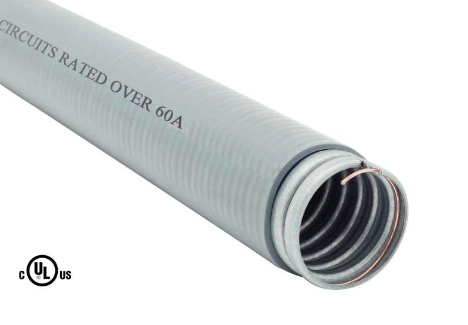Oct. 26, 2023
Liquid-Tight Flexible Metal Conduit (LFMC) is a versatile and durable electrical conduit used for protecting electrical wiring and cables in a wide range of applications. LFMC is known for its flexibility, resistance to environmental factors, and liquid-tight properties, making it suitable for many environments. When considering the use of LFMC in concrete installations, there are several important factors to address. In this extensive explanation, we'll explore the possibilities and considerations of using LFMC in concrete applications.
1. What is LFMC:
Liquid-Tight Flexible Metal Conduit (LFMC) is a type of conduit used to protect electrical wiring and cables from physical damage, moisture, and other environmental factors. It is made from a flexible metal core, often composed of galvanized steel or aluminum, which is covered by a plastic or thermoplastic jacket. The combination of the metal core and the outer jacket provides several benefits:
Flexibility: LFMC is highly flexible, allowing it to be bent and routed easily, even in tight or complex installations. This flexibility is a significant advantage in applications where rigid conduits may be impractical.
Protection: LFMC offers robust protection against mechanical damage, such as impacts or crushing, and helps shield electrical wiring from moisture, dust, and other environmental elements.
Liquid-Tight Seal: As the name suggests, LFMC provides a liquid-tight seal when properly installed, preventing the ingress of liquids and ensuring the integrity of the enclosed wiring in wet or damp environments.
Corrosion Resistance: The metal core of LFMC is typically made from corrosion-resistant materials, making it suitable for use in various environments, including outdoor and industrial settings.

2. Using LFMC in Concrete:
The use of LFMC in concrete applications is possible and, in fact, quite common in certain scenarios. However, it's essential to consider specific factors when integrating LFMC into a concrete environment.
Embedded Installation:
When LFMC is used in concrete, it is typically embedded within the concrete structure. This application is common in commercial and industrial settings where electrical conduits need to be protected within the concrete to meet safety and durability requirements.
Applications:
LFMC is often used in concrete for applications such as electrical wiring in buildings, parking structures, bridges, tunnels, and other infrastructure projects where the conduit needs to be protected from environmental factors and physical damage.
Considerations for Using LFMC in Concrete:
1. Proper Installation:
One of the most critical considerations when using LFMC in concrete is ensuring proper installation. This involves securing the conduit in place, using the appropriate fittings and connectors, and making sure the liquid-tight seal is maintained throughout the installation.
2. Expansion and Contraction:
Concrete structures can experience expansion and contraction due to temperature variations. LFMC should be installed with flexibility in mind to accommodate these movements and prevent damage to the conduit or the enclosed wiring.
3. Corrosion Protection:
While the metal core of LFMC is generally corrosion-resistant, it's important to consider the specific environment in which the conduit will be embedded. In highly corrosive environments, additional protective measures may be necessary to ensure the conduit's longevity.
4. Wiring Compatibility:
Ensure that the wiring or cables enclosed within LFMC are suitable for the intended concrete application. Wiring should be chosen to withstand the environmental conditions and mechanical stresses it will encounter.
5. Code Compliance:
Compliance with local electrical and building codes is essential when using LFMC in concrete installations. Codes may dictate specific installation methods, materials, and safety requirements.
Advantages of Using LFMC in Concrete:
1. Durability: LFMC provides robust protection to electrical wiring, shielding it from physical damage and environmental factors, which is especially important in concrete applications where wiring may be exposed to harsh conditions.
2. Versatility: LFMC's flexibility and adaptability make it suitable for various concrete installations, including those with complex or unconventional routing requirements.
3. Liquid-Tight Seal: The ability to maintain a liquid-tight seal in wet or damp environments within a concrete structure is a significant advantage, ensuring the integrity of the electrical system.
4. Longevity: When properly installed and maintained, LFMC can have a long service life, making it a reliable choice for concrete applications.
Conclusion:
Liquid-Tight Flexible Metal Conduit (LFMC) can indeed be used in concrete applications. Its flexibility, protection, and liquid-tight properties make it a valuable choice for protecting electrical wiring within concrete structures, particularly in settings where durability and environmental resistance are paramount. Proper installation, considerations for expansion and contraction, corrosion protection, wiring compatibility, and adherence to local codes are all crucial factors when using LFMC in concrete. By addressing these considerations, LFMC can provide reliable and long-lasting protection for electrical systems in a concrete environment.

















